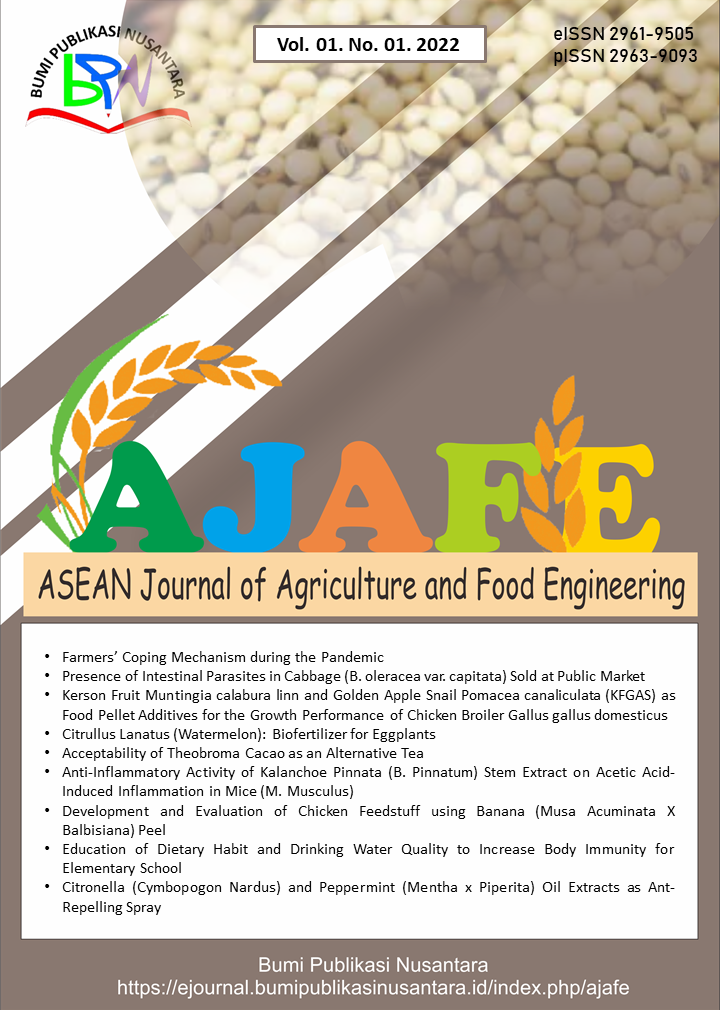Understanding Biodiversity Mapping of School Relating to Types of Plant and Animal Species and Ecological Roles
 ), Ekta Tiwari(2), Anmolpreet Kaur(3), T. Tripti(4), Somya Mishra(5), Vedanshi Kumari(6), Aarti Jadhav(7), P. Karthikeya(8), Benny Paul(9), Jatin Kumar(10), Ankit Sharma(11),
), Ekta Tiwari(2), Anmolpreet Kaur(3), T. Tripti(4), Somya Mishra(5), Vedanshi Kumari(6), Aarti Jadhav(7), P. Karthikeya(8), Benny Paul(9), Jatin Kumar(10), Ankit Sharma(11),
(1) Army Public School Golconda (APSG)
(2) Army Public School Golconda (APSG)
(3) Army Public School Golconda (APSG)
(4) Army Public School Golconda (APSG)
(5) Army Public School Golconda (APSG)
(6) Army Public School Golconda (APSG)
(7) Army Public School Golconda (APSG)
(8) Army Public School Golconda (APSG)
(9) Army Public School Golconda (APSG)
(10) Army Public School Golconda (APSG)
(11) Army Public School Golconda (APSG)
 Corresponding Author
Corresponding Author
Abstract
This study explores the biodiversity within the Public School focusing on species richness, habitat quality, and the ecological roles of various species. The research highlights the importance of biodiversity in maintaining ecosystem stability, even in urban environments, which can surprisingly sustain diverse species. Conducted across the school’s garden, playground, and courtyard, students were actively engaged in observing and recording plant and animal species using tools like clipboards, graph paper, and field guides. The study revealed a wide variety of species, emphasizing the potential of urban spaces to support biodiversity. Moreover, involving students in this biodiversity mapping project provided them with hands-on experience in scientific observation, data collection, and analysis. The findings not only contribute to the understanding of urban biodiversity but also underscore the educational value of integrating ecological studies into school curricula, fostering environmental stewardship among students, and informing future conservation strategies.
Keywords
References
Aronson, M. F., La Sorte, F. A., Nilon, C. H., Katti, M., Goddard, M. A., Lepczyk, C. A., and Winter, M. (2014). A global analysis of the impacts of urbanization on bird and plant diversity reveals key anthropogenic drivers. Proceedings of The Royal Society B: Biological Sciences, 281(1780), 20133330.
Brown, S. (2019). Creating wildlife habitats in urban schools: Strategies and outcomes. Journal of Environmental Education, 30(3), 78-91.
Costanza, R., d'Arge, R., De Groot, R., Farber, S., Grasso, M., Hannon, B., and Van Den Belt, M. (1997). The value of the world's ecosystem services and natural capital. Nature, 387(6630), 253-260.
Elmqvist, T., Folke, C., Nyström, M., Peterson, G., Bengtsson, J., Walker, B., and Norberg, J. (2003). Response diversity, ecosystem change, and resilience. Frontiers in Ecology and the Environment, 1(9), 488-494.
Goddard, M. A., Dougill, A. J., and Benton, T. G. (2010). Scaling up from gardens: biodiversity conservation in urban environments. Trends in Ecology and Evolution, 25(2), 90-98.
Green, L. (2017). Hands-on learning in biodiversity studies: A case study of school-based fieldwork. Environmental Education Research, 12(2), 55-68.
Hooper, D. U., Chapin III, F. S., Ewel, J. J., Hector, A., Inchausti, P., Lavorel, S., and Wardle, D. A. (2005). Effects of biodiversity on ecosystem functioning: A consensus of current knowledge. Ecological Monographs, 75(1), 3-35.
Johnson, M. (2021). Engaging students in biodiversity mapping: Educational benefits and outcomes. Journal of Science Education and Technology, 18(1), 22-35.
Klein, A. M., Vaissière, B. E., Cane, J. H., Steffan-Dewenter, I., Cunningham, S. A., Kremen, C., and Tscharntke, T. (2007). Importance of pollinators in changing landscapes for world crops. Proceedings of The Royal Society B: Biological Sciences, 274(1608), 303-313.
Letourneau, D. K., Armbrecht, I., Rivera, B. S., Lerma, J. M., Carmona, E. J., Daza, M. C., and Trujillo, A. R. (2011). Does plant diversity benefit agroecosystems? A synthetic review. Ecological Applications, 21(1), 9-21.
McKinney, M. L. (2002). Urbanization, biodiversity, and conservation. BioScience, 52(10), 883-890.
Nannipieri, P., Ascher, J., Ceccherini, M., Landi, L., Pietramellara, G., and Renella, G. (2003). Microbial diversity and soil functions. European Journal of Soil Science, 54(4), 655-670.
Purvis, A., and Hector, A. (2000). Getting the measure of biodiversity. Nature, 405(6783), 212-219.
Robinson, K., and Smith, J. (2022). Educational strategies for biodiversity conservation in schools. Conservation Biology Journal, 40(5), 301-315.
Schwartz, M. W. (2008). The performance of the endangered species act. Annual Review of Ecology, Evolution, and Systematics, 39(1), 279-299.
Smith, J. (2018). Impact of human activities on biodiversity in urban environments. Environmental Science Journal, 15(2), 45-58.
Strong, C. (1998). The impact of environmental education on children’s knowledge and awareness of environmental concerns. Marketing Intelligence and Planning, 16(6), 349-355.
Tilman, D., Knops, J., Wedin, D., Reich, P., Ritchie, M., and Siemann, E. (1997). The influence of functional diversity and composition on ecosystem processes. Science, 277(5330), 1300-1302.
Uttara, S., Bhuvandas, N., and Aggarwal, V. (2012). Impacts of urbanization on the hydrological environment of the Jodhpur city, Rajasthan, India. Journal of Environmental Research and Management, 3(3), 72-79.
Warwick, H., and Young, M. (2017). Evaluating the impact of environmental education on students' knowledge and attitudes towards biodiversity and conservation. Environmental Education Research, 23(4), 511-524.
Article Metrics
Abstract View : 486 times
: 486 times Download : 417 times
Download : 417 times
Refbacks
- There are currently no refbacks.
Copyright (c) 2024 Bumi Publikasi Nusantara

This work is licensed under a Creative Commons Attribution-ShareAlike 4.0 International License.



_publication_ethics.png)



